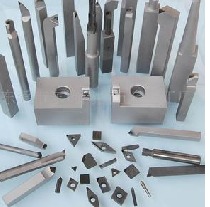Artificial Intelligence
Hardware Tool Industry Development Status Quo Analysis
 The global financial crisis significantly impacted China's manufacturing sector since 2010, and the cutting tool industry was no exception. However, the importance of manufacturing was reemphasized during the 2012 meeting, marking a turning point. As the world economy became more integrated, manufacturing gradually shifted to mainland China, positioning the country as a rising global manufacturing hub. This shift has made China one of the most promising markets for cutting tools, with a growing demand for skilled professionals in the field—especially those with specialized knowledge.
Geographically, cutting tool companies are concentrated in key regions. Cities like Xixiashu in Changzhou, Jiangsu; Wenling in Taizhou, Zhejiang; and Chang'an in Dongguan, Guangdong, are major production hubs. Meanwhile, first-tier cities such as Shanghai, Beijing, and Shenzhen are dominated by trading companies. Inland cities like Zhengzhou, Chengdu, and Zhuzhou tend to have a mix of production and trade activities, reflecting a more balanced approach.
The financial crisis hit many companies hard, leading to layoffs and reduced operations. However, some firms emerged stronger from the downturn. The tool industry showed improvement in the first half of this year, particularly in the first quarter, while the second quarter saw slower growth due to seasonal factors in the machinery sector.
In first-tier cities, where operational costs are high, many companies focus on trade rather than manufacturing. For example, in Shanghai alone, there are approximately 1,500 cutting tool companies, with 80% being trading firms. This creates a strong demand for sales engineers, with 70% to 86% of companies seeking top talent. However, few universities offer specialized programs in the tool industry, and most graduates come from mechanical engineering backgrounds. As a result, professionals in the field often gain experience through on-the-job training, making skilled workers relatively scarce.
With the economic recovery, many production-trading companies have moved their factories or new projects inland to reduce costs. This trend reflects a strategic shift to save on land and operational expenses. Talent movement is also shifting: sales engineers, managers, and directors are increasingly moving toward the Pearl River Delta, Yangtze River Delta, and Beijing-Tianjin areas. Meanwhile, technical roles such as tool engineers, application engineers, and design engineers are flowing to economically developed inland cities like Wuhan, Chongqing, and Chengdu, which can better retain high-level talent.
Finally, as the industry transitions from traditional standard tools to modern, high-efficiency solutions, manufacturers are undergoing a challenging transformation. This process involves significant changes at both the enterprise and industry levels. Whether viewed from the perspective of survival in the cutting tool sector or the broader need for China’s manufacturing industry to enhance competitiveness, it is clear that accelerating structural adjustments and promoting the development of advanced, efficient tools is essential for long-term success.
The global financial crisis significantly impacted China's manufacturing sector since 2010, and the cutting tool industry was no exception. However, the importance of manufacturing was reemphasized during the 2012 meeting, marking a turning point. As the world economy became more integrated, manufacturing gradually shifted to mainland China, positioning the country as a rising global manufacturing hub. This shift has made China one of the most promising markets for cutting tools, with a growing demand for skilled professionals in the field—especially those with specialized knowledge.
Geographically, cutting tool companies are concentrated in key regions. Cities like Xixiashu in Changzhou, Jiangsu; Wenling in Taizhou, Zhejiang; and Chang'an in Dongguan, Guangdong, are major production hubs. Meanwhile, first-tier cities such as Shanghai, Beijing, and Shenzhen are dominated by trading companies. Inland cities like Zhengzhou, Chengdu, and Zhuzhou tend to have a mix of production and trade activities, reflecting a more balanced approach.
The financial crisis hit many companies hard, leading to layoffs and reduced operations. However, some firms emerged stronger from the downturn. The tool industry showed improvement in the first half of this year, particularly in the first quarter, while the second quarter saw slower growth due to seasonal factors in the machinery sector.
In first-tier cities, where operational costs are high, many companies focus on trade rather than manufacturing. For example, in Shanghai alone, there are approximately 1,500 cutting tool companies, with 80% being trading firms. This creates a strong demand for sales engineers, with 70% to 86% of companies seeking top talent. However, few universities offer specialized programs in the tool industry, and most graduates come from mechanical engineering backgrounds. As a result, professionals in the field often gain experience through on-the-job training, making skilled workers relatively scarce.
With the economic recovery, many production-trading companies have moved their factories or new projects inland to reduce costs. This trend reflects a strategic shift to save on land and operational expenses. Talent movement is also shifting: sales engineers, managers, and directors are increasingly moving toward the Pearl River Delta, Yangtze River Delta, and Beijing-Tianjin areas. Meanwhile, technical roles such as tool engineers, application engineers, and design engineers are flowing to economically developed inland cities like Wuhan, Chongqing, and Chengdu, which can better retain high-level talent.
Finally, as the industry transitions from traditional standard tools to modern, high-efficiency solutions, manufacturers are undergoing a challenging transformation. This process involves significant changes at both the enterprise and industry levels. Whether viewed from the perspective of survival in the cutting tool sector or the broader need for China’s manufacturing industry to enhance competitiveness, it is clear that accelerating structural adjustments and promoting the development of advanced, efficient tools is essential for long-term success.China Searun Solar Solution Co., Ltd. , https://www.srsolarlights.com